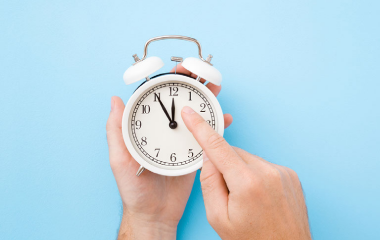As most of the U.S. prepares to return to standard time by setting clocks back one hour on Nov. 1, the American Academy of Sleep Medicine is calling for an end to seasonal time changes in favor of year-round standard time.
There is growing evidence that suggests daylight saving time comes with dangers, including a greater risk of heart attack, medical errors, and car accidents associated with the spring time change. A recent position statement from the AASM noted that public health and safety would benefit from eliminating seasonal time changes altogether, calling for use of permanent standard time as it more closely aligns with the daily rhythms of the body’s internal clock.
A recent survey from the AASM found that a majority of Americans (63%) support ending the twice yearly time changes in favor of a national, fixed, year-round time.
“Evidence of the negative impacts of seasonal time changes continue to accumulate, and there is real momentum behind the push to end seasonal time changes,” said AASM President Dr. Kannan Ramar. “The AASM believes that a fixed, national year-round standard time would be of tremendous benefit to overall health and safety.”
To maximize the benefits of the hour gained from the fall time change on Nov. 1, the AASM offers these tips for anyone who hasn’t been getting enough sleep:
Wait to change your clocks until it is time to get ready for bed.
Go to bed at your usual bedtime.
Just before getting into bed, set your clocks back one hour.
Wake up at your regular wake time, which will allow you one more hour of sleep.
Try to maintain this new sleep schedule and note how you feel with an extra hour of sleep.
Authored by:
Jennifer Gibson





